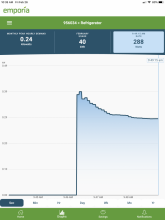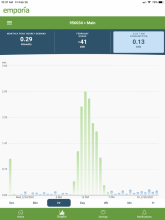svetz
Works in theory! Practice? That's something else
The Emporia Vue is a possible power monitoring solution... currently $109 for 8 ports. A number of members like jasonhc73 have given it a thumbs up (see search for more) but also warns it doesn't distinguish between consumption and production in this post.
Considering current sensors start around $10/each price seems good (although the accuracy of the current sensors might be questionable).
Reviews indicate accuracy is around 2% with the Gen 2... that's probably not including voltage deviations (e.g., 10 amps at 120V is 1200 watts, but if your voltage is 117, then only 1170 watts). App assumes PF=1.
Questions

| 
|
Considering current sensors start around $10/each price seems good (although the accuracy of the current sensors might be questionable).
Reviews indicate accuracy is around 2% with the Gen 2... that's probably not including voltage deviations (e.g., 10 amps at 120V is 1200 watts, but if your voltage is 117, then only 1170 watts). App assumes PF=1.
Questions
- Any buyer's remorse or better products?
- Has anyone done any packet sniffing to see how tough it would be to integrate with a home-brew program to access the raw data over the WiFi? Any packet captures that could be shared?
Last edited:




